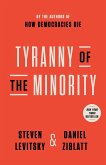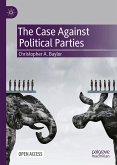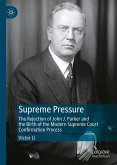This book explores the process by which constitutional indeterminacies involving reapportionment were resolved through the political process and examines how the current House arrived at its 435-seat limit. In doing so, it also elucidates the way the House was instituted and reconstituted after each census to reconcile the demands of representation with the challenges of institutional design. The history of reapportionment is not one of stagnation. Since the 1911 Apportionment Act, the House has been set at 435 seats despite immense increases in population. Prior to this, Congress adjusted the size of the House to address representational demands arising from population growth. Before the 1911 Act, only once, in 1842, did Congress reduce the overall size of the House, effectively establishing the precedent of increasing the number of seats to provide additional representatives for growing populations. Thus, debates over the size of the House and how to apportion seats combined theories of representation with institutional concerns over the structure of the House, creating a unique blend of American political thought and American political development.
Maintaining the House at 435 seats for over a century has created a deep chasm between theories of representation, framed using the Anti-Federalists and Federalists, and the reality of institutional design. Historical changes in the size of the House coincided with the Anti-Federalists preferences for adequate representation, while the solitary instance of reducing the total number of seats followed the Federalists preference for legislative efficiency. The increase to 435 seats in 1911 was justified in terms of adequate representation for the growth in population at the expense of legislative efficiency. The lack of growth since then cannot now be justified in terms of legislative efficiency because the initial adoption of 435 lacked any such justification, leaving the House as neither adequately representative nor legislatively efficient. Consequently, with Congress simply adhering to the automatic reapportionment process established in 1929, avenues for addressing deficiencies in either adequate representation or legislative efficiency are effectively eliminated, and important congressional debates over reapportionment, infused with competing theories of representation, have all but fallen silent. This book aims to break that silence.
Maintaining the House at 435 seats for over a century has created a deep chasm between theories of representation, framed using the Anti-Federalists and Federalists, and the reality of institutional design. Historical changes in the size of the House coincided with the Anti-Federalists preferences for adequate representation, while the solitary instance of reducing the total number of seats followed the Federalists preference for legislative efficiency. The increase to 435 seats in 1911 was justified in terms of adequate representation for the growth in population at the expense of legislative efficiency. The lack of growth since then cannot now be justified in terms of legislative efficiency because the initial adoption of 435 lacked any such justification, leaving the House as neither adequately representative nor legislatively efficient. Consequently, with Congress simply adhering to the automatic reapportionment process established in 1929, avenues for addressing deficiencies in either adequate representation or legislative efficiency are effectively eliminated, and important congressional debates over reapportionment, infused with competing theories of representation, have all but fallen silent. This book aims to break that silence.








